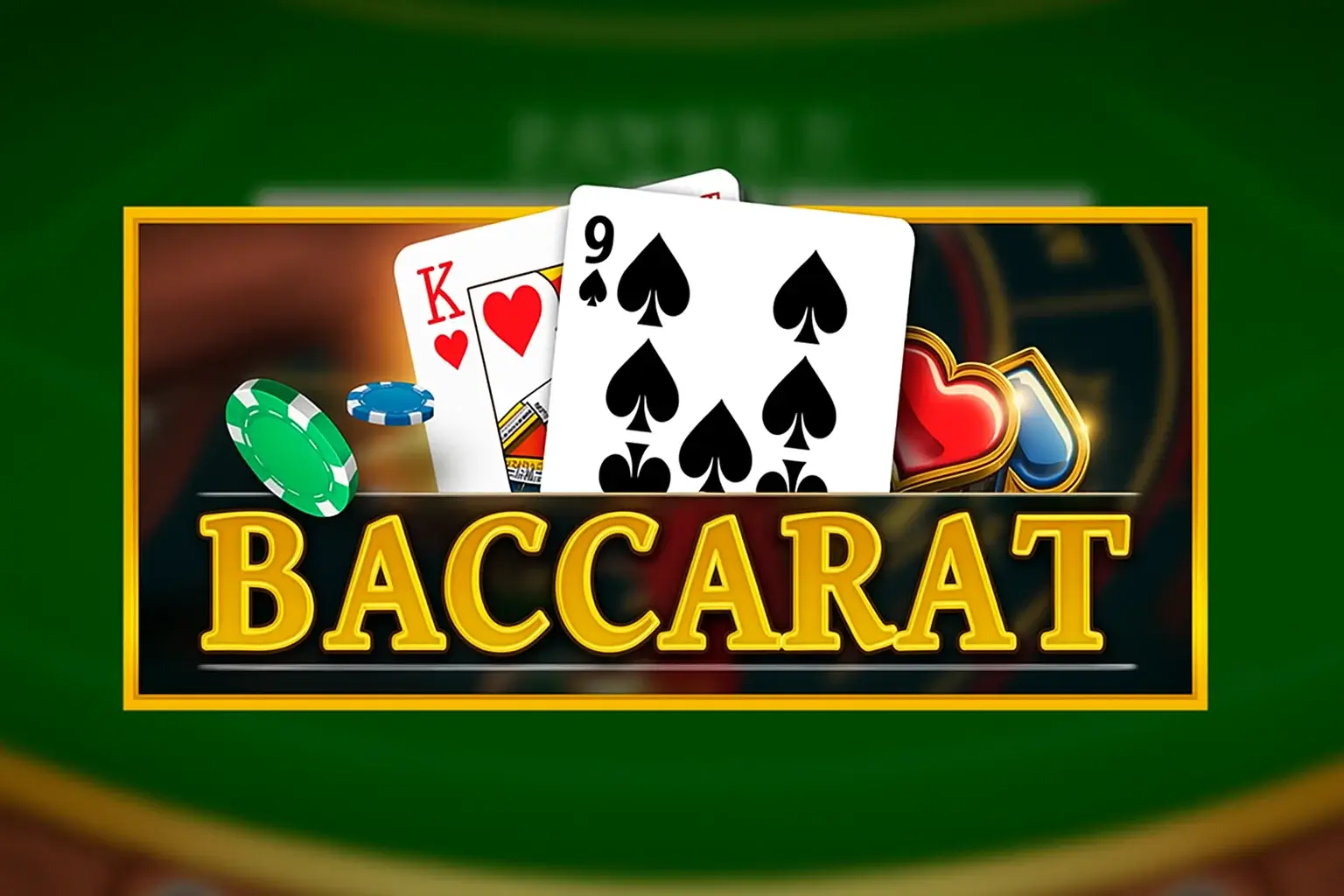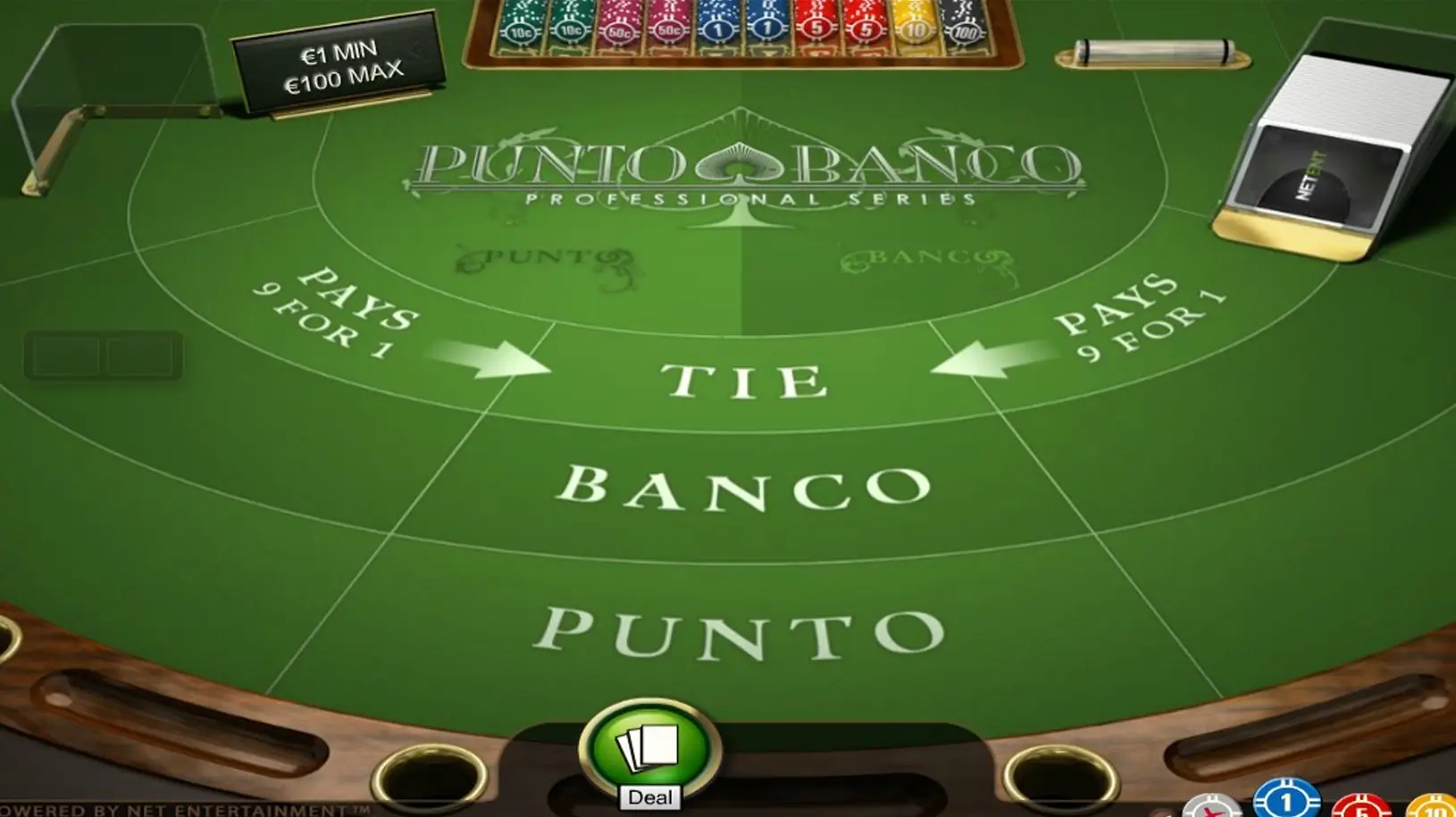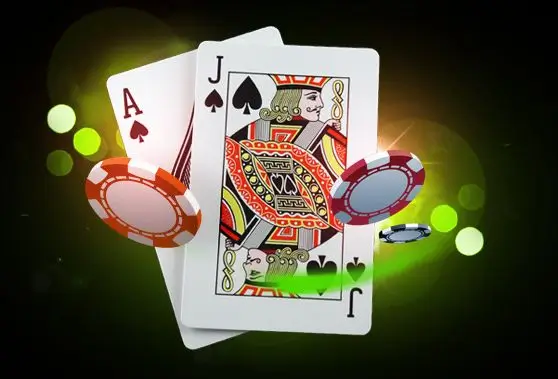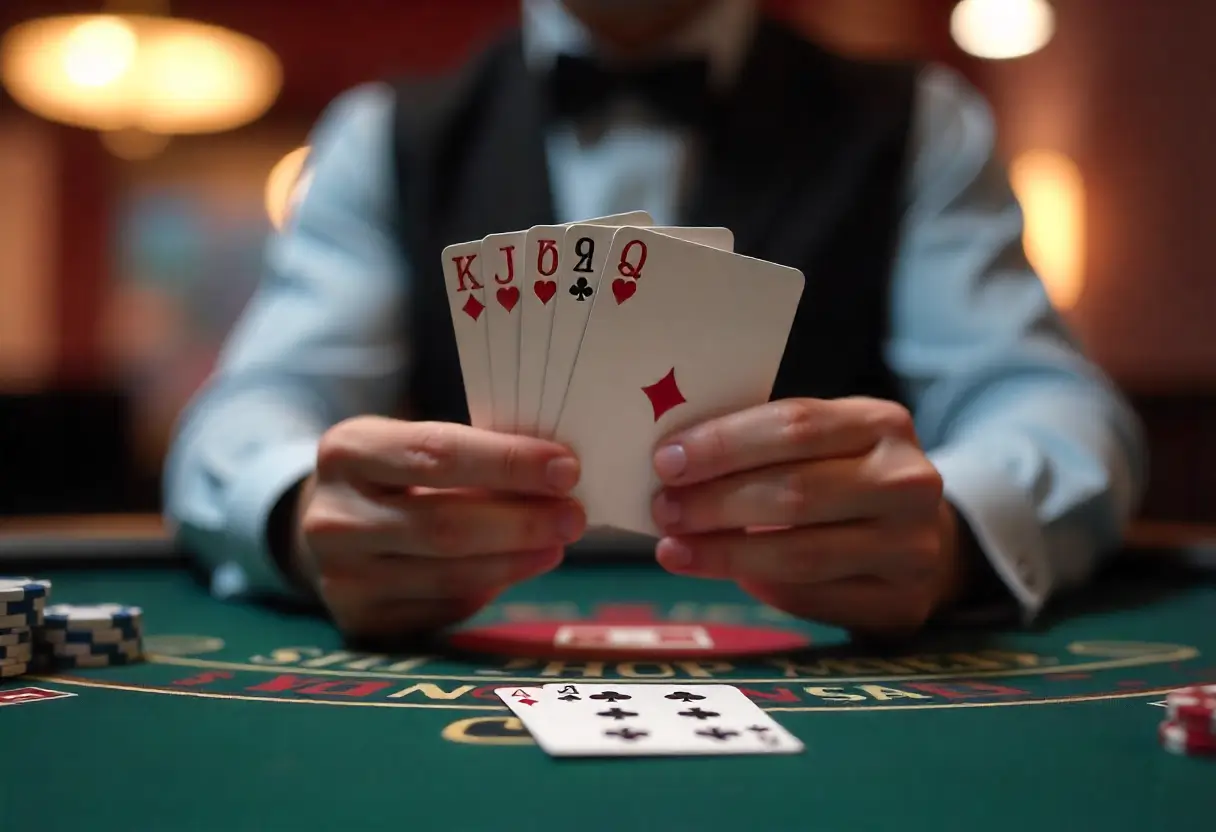Rules, Payouts, and How This Ancient Game Still Captivates High Rollers Worldwide
I’ll never forget watching my first baccarat game in Monte Carlo. It was 2006, and I was there as a young gaming analyst trying to understand why this supposedly “simple” game mesmerized wealthy players for hours. I watched men in tuxedos and women in elegant gowns placing bets, sipping champagne, moving at an almost meditative pace.
Nobody seemed rushed. Nobody seemed stressed despite the thousands of euros on the table. Everyone was calm, focused, deliberate.
One elegant woman sat at the table. She’d been there for three hours. She wasn’t wild-eyed or emotional. She was quiet, composed, watching the cards with what I can only describe as reverence. I asked the dealer about her afterward. He said she played baccarat every evening, always the same amount, always the same calm demeanor. She wasn’t trying to get rich. She was enjoying the ritual.
That moment changed my understanding of baccarat. I realized it’s not primarily about winning money. It’s about the experience. The pacing. The elegance. The simplicity combined with psychological depth.
Over eighteen years analyzing baccarat, I’ve come to respect it as one of the most misunderstood yet genuinely captivating casino games. This guide will teach you everything about baccarat – from the absolutely fundamental rules to the psychological appeal to the different versions that have evolved over time.
The Extraordinary Simplicity: What Makes Baccarat Unique
Here’s the thing about baccarat that initially confuses people: it’s almost absurdly simple.
You’re not making complex decisions like in blackjack. You’re not bluffing like in poker. You’re not trying to manage a complicated strategy. In baccarat, your role as a player is almost passive.
Before any cards are dealt, you make one decision: are you betting on the Player to win, betting on the Banker to win, or betting on a Tie?
That’s it. That’s your entire involvement in decision-making.
Once you place your bet, cards are dealt according to fixed rules that never change. No skill involved. No strategy (beyond which of the three options you bet on). Just watch the cards unfold according to predetermined rules.
This simplicity is revolutionary in the casino world. Compare it to blackjack, where you’re constantly making decisions. Compare it to poker, where you’re competing strategically against other players. Compare it to roulette, where you’re choosing where to place multiple bets.
Baccarat? You bet on Player, Banker, or Tie, and then you watch. The game unfolds with absolute predictability.
This is why baccarat appeals to a certain type of player. People who are exhausted from complex decision-making in their daily lives sometimes want a game that requires no complex decisions. Baccarat delivers exactly that.
The Card Values: Simple Arithmetic
Let me explain how cards are valued in baccarat because it’s a bit different from other games.
Cards two through nine are worth their face value. A two is worth two points. A nine is worth nine points. Simple.
Tens and face cards (tens, jacks, queens, kings) are worth zero points. This is crucial and different from many games where face cards are worth ten.
Aces are worth one point.
The goal in baccarat is to have a hand that totals closer to nine than the other hand. That’s the fundamental objective. Get as close to nine as possible. The closest hand wins.
Here’s the crucial part: only the last digit matters. If your hand totals sixteen (like six plus ten), you actually have six. The one is dropped. If your hand totals twenty-three (three plus twenty), you actually have three. The first digit is disregarded.
This rule creates interesting dynamics. Getting a ten-value card sometimes doesn’t help you because it adds zero points but makes your hand larger numerically.
Let me give examples:
If you have a seven and an eight, you have 7+8=15. But only the last digit counts, so you have 5.
If you have a seven and a nine, you have 7+9=16. But only the last digit counts, so you have 6.
If you have a king and a three, you have 0+3=3. The king adds zero, so you have 3.
If you have a queen and a queen, you have 0+0=0. This is the worst possible hand – called a “baccarat” (which is actually what gives the game its name).
The goal is to get closer to nine than your opponent. Nine is the best possible hand (often called a “natural”). Eight is the second best.
The Deal: How a Round Begins
Before cards are dealt, players place bets. You choose: Player, Banker, or Tie. You place your chips on the corresponding area on the table.
Then the dealer distributes cards according to fixed rules.
Initially, both the Player and the Banker receive two cards each. All cards are dealt face up. Everyone can see every card.
Both hands are immediately added up and revealed. If either hand totals eight or nine, the game is over. The closest hand to nine wins. This immediate conclusion is called a “natural.”
If neither hand has eight or nine, then a third card might be dealt to the Player, and then potentially to the Banker, according to fixed rules. These rules are mechanically applied. Nobody makes decisions. The rules determine everything.
The Rules for Drawing a Third Card: The Mechanical Process
Here’s where baccarat becomes almost robotic. The rules for drawing third cards are fixed and absolute.
Player’s Third Card Rule:
The Player hand is always dealt first. If the Player’s first two cards total five or less, the Player gets a third card. If the Player’s first two cards total six or more, the Player stands (no third card). Simple.
Banker’s Third Card Rule:
Once the Player’s hand is complete (either two cards or three cards), the Banker acts. But here’s where it gets slightly more complex: the Banker’s decision for a third card depends on what the Banker’s hand totals AND what the Player’s third card was (if the Player got one).
These are the specific rules:
If the Banker’s first two cards total seven or higher, the Banker stands. No third card.
If the Banker’s first two cards total six, the Banker draws a third card only if the Player’s third card was a five or six.
If the Banker’s first two cards total five, the Banker draws a third card only if the Player’s third card was a four, five, six, or seven.
If the Banker’s first two cards total four, the Banker draws a third card only if the Player’s third card was a two, three, four, five, six, seven, eight, or nine (basically everything except ace and ten).
If the Banker’s first two cards total three or lower, the Banker always draws a third card.
These rules sound complex, but they’re mechanically applied. You don’t decide anything. You don’t calculate anything. The dealer follows the rules absolutely. It’s mathematical and predetermined.
Why do these rules exist? They’re designed to balance the game slightly. If both hands followed identical rules, the Player would have a slight disadvantage because the Banker acts after the Player. So the rules give the Banker slightly more conservative guidelines to maintain balance.
Winning and Losing: Understanding Payouts
This is crucial because the payouts in baccarat have important implications.
If you bet on Player and Player wins: You’re paid 1-to-1. You bet twenty dollars, you win twenty dollars. You get your original twenty back plus twenty dollars in winnings, for a total of forty dollars.
If you bet on Banker and Banker wins: You’re paid 1-to-1, but with a commission taken out. In most casinos, you’re paid 95 cents for every dollar wagered. So you bet twenty dollars, you win nineteen dollars (95% of twenty). You get your original twenty plus nineteen in winnings, for a total of thirty-nine dollars. The casino takes the five percent commission on Banker wins.
Why does the Banker bet pay slightly less? Because the Banker’s hand has a mathematical advantage. The Banker acts last, seeing the Player’s complete hand before deciding to draw. This gives the Banker better information for decision-making. To compensate and maintain fairness, the Banker payout is reduced by the commission.
If you bet on Tie and a Tie occurs: You’re paid 8-to-1 or 9-to-1 depending on the casino. So you bet twenty dollars on Tie, and a Tie happens, you win 160 or 180 dollars (depending on the payout), plus your original twenty. Tie bets pay much more because ties are statistically much less likely.
If you lose: You lose your bet. Simple.
The Payout Table: Quick Reference
Let me present a clear payout table so you understand payouts at a glance:
| Outcome | Payout |
|---|---|
| Player Wins | 1-to-1 |
| Banker Wins | 1-to-1 minus 5% commission (often displayed as 0.95-to-1) |
| Tie | 8-to-1 or 9-to-1 (varies by casino) |
Most casinos use 8-to-1 for tie payouts, but some use 9-to-1. Always check before playing.
Important note: A “tie” means both hands are identical. Player has seven, Banker has seven. It’s rare – around 9.5% of hands result in ties.
The Pace: Why Baccarat Feels Different
If you’ve played multiple casino games, you’ve noticed something: baccarat is slow.
Not slow in a negative way. Slow in a deliberate, paced way.
A single hand of baccarat takes two to three minutes. Sometimes longer. The dealer calls out the results slowly. Players are allowed time to process. Nobody is rushed.
Compare this to blackjack, where hands move quickly. Or slots, where you can play dozens of spins per hour. Baccarat is deliberately unhurried.
I think this pacing is intentional. Baccarat was developed for high-rollers and wealthy players who weren’t trying to play as many hands as possible. They were trying to enjoy an elegant experience. The pacing reflects that heritage.
Modern baccarat maintains this pacing. Even in online versions, the animation and pacing is deliberate rather than rushed.
This pacing appeals to certain players tremendously. One woman I interviewed told me she plays baccarat specifically because she finds the pace meditative. She’s stressed from her job. Baccarat’s deliberate speed helps her relax. She plays three or four hands per evening and finds it genuinely therapeutic.
Classic Baccarat: The High-Roller Version
Traditional baccarat, often called “Big Baccarat” or “Salon Baccarat,” is the version you’ll find in high-limit areas of casinos.
Several features distinguish it:
Table Size: The table is physically large – typically three times the size of a blackjack table. It’s designed for many players to sit around it simultaneously.
Dealer Count: There are multiple dealers at a classic baccarat table – typically three. One main dealer controls the overall game. Two side dealers manage payouts and collect bets.
Player Role: In classic baccarat, actual players deal the cards, though a dealer controls the action. The role of dealing rotates around the table. This ceremonial element adds to the elegance.
Minimum Bets: Classic baccarat typically has high minimum bets – often twenty-five, fifty, or even a hundred dollars per hand. This restricts play to serious or wealthy players.
Atmosphere: Classic baccarat tables have a formal, elegant atmosphere. Everyone dresses nicely. Everyone takes the game seriously. There’s a sense of ceremony.
Speed: Classic baccarat proceeds at a measured pace. The dealing ritual is unhurried. Announcements are formal.
I’ve spent considerable time at classic baccarat tables, and I understand the appeal. There’s genuine elegance to it. The ritual matters. The ceremony matters. It’s not just about cards and money – it’s about the experience.
That said, classic baccarat is intimidating for casual players. The minimum bets are high. The atmosphere is formal. You might feel uncomfortable if you’re new to casinos.
Mini Baccarat: Democratizing the Game
Mini baccarat is essentially the same game as classic baccarat but scaled down for casual players.
Several differences distinguish mini baccarat:
Table Size: The table is small – about the size of a blackjack table. It’s more intimate.
Dealer Control: One dealer runs the entire game. No side dealers. No formal dealing role for players. The dealer controls everything.
Minimum Bets: Mini baccarat typically has low minimum bets – often five, ten, or twenty-five dollars. Much more accessible than classic baccarat’s high minimums.
Speed: Mini baccarat moves quickly – similar to blackjack pace. You can play many more hands per hour than classic baccarat.
Atmosphere: Mini baccarat is casual. You don’t need to dress formally. You don’t need high rollers around you. It’s accessible to anyone.
The Rules: The actual game rules are identical. Player still acts first. Banker still has the third-card advantage. The mechanics don’t change. Only the presentation changes.
From a gambling perspective, mini baccarat is mathematically identical to classic baccarat. The odds are the same. The house edge is the same. The payouts are the same. The only difference is the presentation and the betting minimums.
I think mini baccarat has made baccarat accessible to millions of people who couldn’t access classic baccarat. In a way, mini baccarat democratized this elegant game. That’s genuinely positive.
Which One Should You Play? Classic vs. Mini
The choice between classic and mini baccarat is really a question about atmosphere and comfort.
Choose classic baccarat if: You prefer formality and ceremony. You want an elegant, exclusive experience. You have the bankroll for high minimum bets. You find the slower pace appealing. You want to feel like you’re part of a high-roller world.
Choose mini baccarat if: You’re new to baccarat and want to learn in a low-pressure environment. You prefer casual atmosphere. You want lower minimum bets. You prefer faster pace. You’re interested in the game mechanics more than the ceremony.
Mathematically, they’re the same. Emotionally and experientially, they’re different.
Personally, I enjoy both. I appreciate the elegance of classic baccarat. I also appreciate the accessibility of mini baccarat. They serve different purposes and appeal to different players.
The Odds: Understanding the Mathematics
Let me present the house edge information clearly because this matters for your decision-making.
If you bet on Player: The house edge is approximately 1.06%. For every hundred dollars wagered on Player bets, the casino expects to keep 1.06 dollars on average over time.
If you bet on Banker: The house edge is approximately 1.06%. Even though Banker wins slightly more often (the Banker has a mathematical advantage due to acting last), the five percent commission on wins reduces the payout enough that the overall house edge is similar to the Player bet.
If you bet on Tie: The house edge is approximately 14.4% (with 8-to-1 payouts). This is substantially higher than Player or Banker bets. The Tie bet is statistically unlikely and the payout doesn’t quite compensate for the rarity. Most experienced baccarat players avoid Tie bets entirely.
Let me put this in perspective. If you play one hundred hands of baccarat, betting on Player or Banker each hand with average bets of twenty dollars, you can expect to lose approximately 2.12 dollars on average. That’s remarkably low. That’s why baccarat is considered one of the fairest casino games mathematically.
In comparison, slot machines often have house edges of 2-15%. Roulette has a house edge of around 2.7% for American roulette. Blackjack with basic strategy has a house edge of around 0.5%.
So baccarat is fairer than slots and roulette, but slightly worse than optimal blackjack. Still, it’s one of the best odds you’ll find in a casino.
Betting Strategies: The Martingale and Other Systems
Many baccarat players use betting strategies or “systems.” The most famous is the Martingale system.
The Martingale works like this: You start with a base bet of, say, twenty dollars. You bet on Player (or Banker, consistently). If you lose, you double your bet for the next hand. You keep doubling until you win. Once you win, you return to your base bet.
The theory is that you’ll eventually win, and when you do, that win will cover all your previous losses plus yield a profit equal to your original bet.
Sounds good in theory. The problem in practice: you can lose many times in a row before a win. After a few losses, you’re doubling rapidly. A ten-loss streak means your bet on the eleventh hand is 20 x 2^10 = 20,480 dollars. Most casinos have maximum bet limits that prevent you from doubling infinitely.
Also, you need a massive bankroll to survive losing streaks. If you only have a thousand dollars and you lose ten hands in a row using the Martingale, you’re out of money.
I’ve analyzed the Martingale extensively. Mathematically, it doesn’t work. It doesn’t improve your odds. It doesn’t reduce the house edge. All it does is accelerate how fast you either win or lose.
My recommendation: ignore betting systems entirely. They don’t work. They create the illusion of control when you have none. Just bet consistently at an amount you can afford to lose.
Many systems have been invented – the D’Alembert, the Fibonacci, the Parlay. None of them actually work mathematically. They’re all based on faulty logic.
The only thing that matters in baccarat is: Which hand do you bet on (Player or Banker)? Player and Banker have nearly identical odds, so either is fine. Just pick one and be consistent.
The Psychological Appeal: Why High-Rollers Love Baccarat
I’ve interviewed dozens of high-rollers who play baccarat regularly. I’ve asked them why they prefer it over other games.
Their answers reveal something interesting about baccarat’s psychological appeal.
Many describe it as meditative. One man told me he plays baccarat because it’s calming. “Blackjack stresses me out,” he said. “I have to make decisions every hand. Baccarat? I make one decision – Player or Banker – and then I watch. The game unfolds. It’s peaceful.”
Others appreciate the pacing. In a world where everything moves quickly, baccarat’s deliberate pace is refreshing. One woman said she plays baccarat to slow down. “Everything in my life is fast. Baccarat makes me slow down. It’s therapeutic.”
Some appreciate the simplicity. “I don’t want to think hard,” one player told me. “Poker requires strategy. Blackjack requires decisions. Baccarat? I just choose Player or Banker and watch.”
Others appreciate the ceremony and elegance, particularly with classic baccarat. “It feels sophisticated,” one man said. “I feel like I’m part of something elegant.”
One player gave an answer that stuck with me: “I play baccarat because I can lose gracefully. The game has no blame. I don’t feel stupid. I didn’t make bad decisions. I just lost a card game. It’s honest.”
This last observation is interesting. In games requiring strategy, losing can feel like a personal failure. You feel like you made wrong decisions, played poorly, missed an opportunity. In baccarat, you didn’t decide anything. You simply bet on an outcome. If it didn’t happen, that’s not a personal failure – it’s just bad luck. There’s an emotional freedom in that.
Online Baccarat: The Digital Version
Online baccarat has become increasingly popular, especially post-pandemic. It maintains the core mechanics while offering digital convenience.
Some online baccarat options:
Standard Online Baccarat: Computer-generated cards and outcomes. You place bets and the computer deals cards according to the rules. Fast-paced because the computer doesn’t have to be as deliberate as a physical dealer.
Live Dealer Baccarat: An actual dealer sits at a real table and deals real cards, which you see via video stream. You place bets online, and a real person conducts the game. This combines online convenience with the authenticity of a real dealer. Many players prefer this because the experience feels more genuine.
Mini Baccarat Online: Small-stakes online baccarat with all the accessibility of digital play plus mini baccarat’s lower minimums and casual atmosphere.
Online baccarat has some advantages: you can play any time, you can play from home, minimum bets are usually lower. Some disadvantages: there’s no physical experience of handling cards, the pacing might feel off compared to live play, and you need to trust that the random number generator is truly random.
Personally, I think online baccarat is great for learning the game. But if you enjoy baccarat, I’d eventually try live play because the physical experience is part of what makes baccarat special.
Common Misconceptions: What People Get Wrong
I’ve noticed several misconceptions about baccarat that deserve addressing.
Misconception One: The Banker always wins. False. The Banker wins slightly more often (approximately 50.68% of hands versus Player’s 49.32%, excluding ties), but it’s barely more often. Enough hands will be Player wins that betting on Player is viable.
Misconception Two: Ties are good bets. False. Ties pay 8-to-1 or 9-to-1, but ties occur only about 9.5% of the time. The payout doesn’t compensate for the rarity. Experienced players avoid Tie bets.
Misconception Three: There’s a pattern to which hand wins. False. Each hand is independent. Patterns don’t exist. If the last five hands were Banker wins, the next hand is still 50-50 essentially. Baccarat isn’t predictable.
Misconception Four: You can beat baccarat with a system. False. No betting system beats a negative expectation game. Card counting doesn’t work in baccarat because the cards are reshuffled frequently. You can’t overcome the house edge.
Misconception Five: Baccarat is harder than it actually is. False. Many people avoid baccarat thinking it’s complicated. It’s actually incredibly simple. You bet on Player, Banker, or Tie. You wait. The cards are dealt. You win or lose. That’s it.
These misconceptions prevent people from trying baccarat. In reality, baccarat is probably the simplest casino game to learn.
The Atmosphere: The Hidden Appeal
What I’ve learned over eighteen years is that baccarat’s appeal extends beyond mathematics and rules. It’s about atmosphere and experience.
Baccarat has developed a certain mystique. It’s associated with elegance, sophistication, high-rollers, and exclusive clubs. James Bond plays baccarat, at least in the movies. There’s an aspirational quality to baccarat that other games lack.
This atmosphere attracts a certain type of player. People who want to feel like they’re part of something exclusive and sophisticated.
I’m not dismissing this. Atmosphere matters. The human experience isn’t just about odds and house edge. It’s about feeling. Baccarat creates positive feelings for certain people. That has value.
My Final Assessment: Is Baccarat Worth Playing?
After eighteen years studying and playing baccarat, here’s my honest assessment:
Baccarat is genuinely worth playing, but not for the money. The odds are reasonable, but you’re still expected to lose over time, like in every casino game.
But baccarat’s value isn’t primarily financial. It’s experiential.
If you enjoy elegant, slowly-paced, mentally low-demand gaming in a sophisticated atmosphere, baccarat is excellent. If you appreciate simplicity and don’t want to think hard about decisions, baccarat is perfect. If you want to play for extended periods without high stress or emotional involvement, baccarat delivers.
Mini baccarat is great if you want the game without the high minimum bets or formal atmosphere. Classic baccarat is wonderful if you want the full experience of elegance and ceremony.
My recommendation: try baccarat. Play a few hands. See if the pace and simplicity appeal to you. Some people fall in love with baccarat immediately. Others prefer faster-paced games. There’s no right or wrong – just personal preference.
But don’t avoid it because you think it’s complicated. It’s not. It’s possibly the simplest casino game to learn. Give it a chance.



